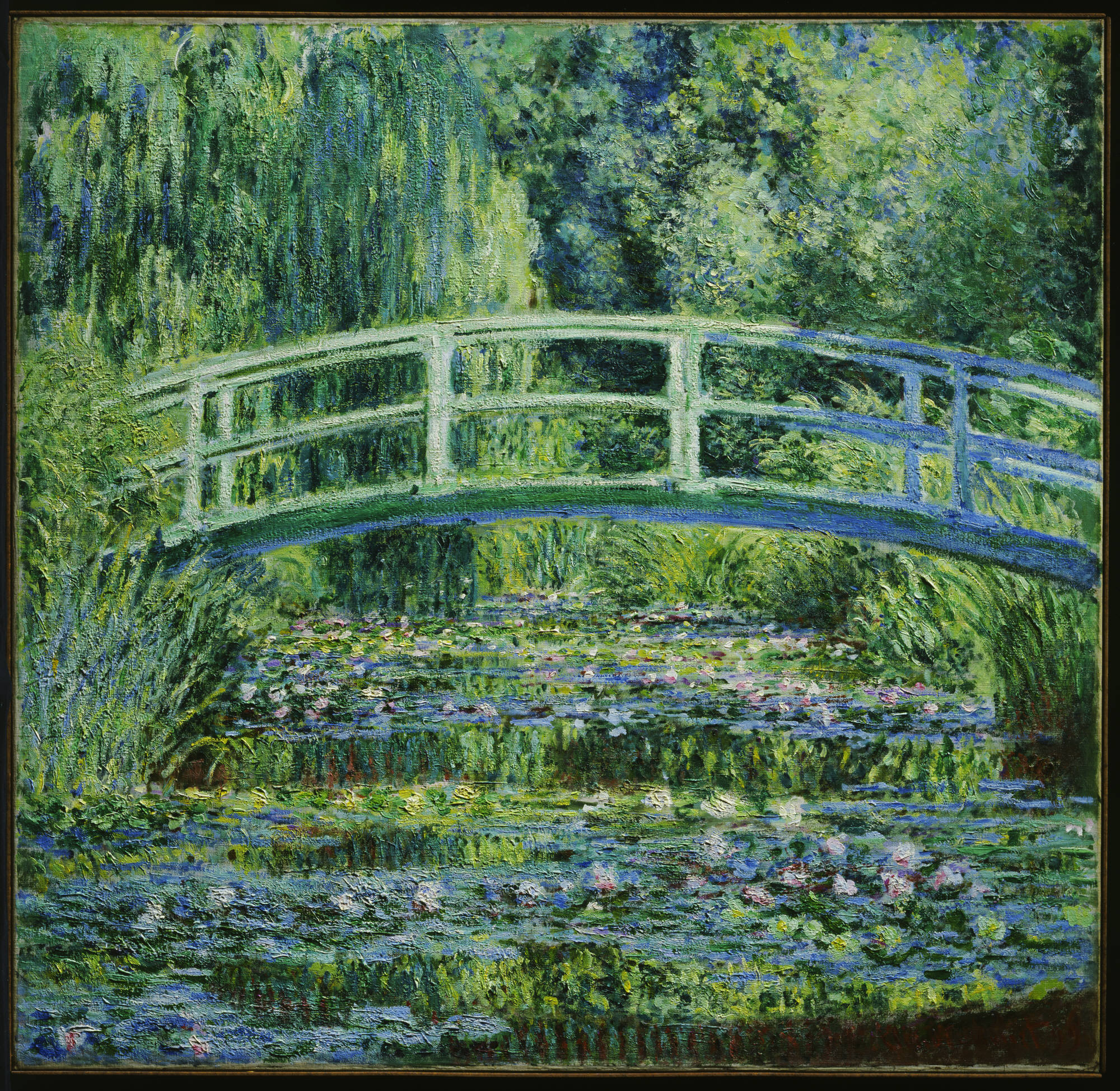
Crossing a bridge today—eyes on the traffic and mind already on the other side—it’s all too easy to pass over the span without reflecting on its engineering, its aesthetics, and its history. This online collection considers bridges not merely as structures but also as important visual cues and metaphors: they join what is separated; they increase communication; they facilitate circulation; they are social and cultural constructions, as well as feats of engineering.

Examining pictures of bridges raises many questions. For example, featured at the Art Museum is Water Lilies and Japanese Bridge by Claude Monet. What does the bridge signify in paintings by Monet and by many of his contemporaries? From the early nineteenth century to the early twentieth century, bridges were also significant pictorial elements in Japanese landscape prints. Can bridges depicted by nineteenth- and twentieth-century Western artists and masters of Japanese prints jointly tell a history of mutual artistic influence? One of the most famous paintings in the Museum's Asian art collection is Mind Landscape of Xie Youyu by the Yuan dynasty (1260–1368) painter Zhao Mengfu 趙孟頫 (1254–1322). How can the stone steps of the bridge in this painting help to define a liminal link between one’s inner world and the outside world? Five paintings from the collections have been selected to demonstrate the bridge as this type of liminal formation in Chinese landscape art. Putting prints and photographs of the imposing and massive structure of the Brooklyn Bridge alongside photographs of bridges designed by Swiss structural designers such as Robert Maillart (1872–1940) in the twentieth century, how might images of bridges serve as cues to reflect a changing attitude toward nature?
Resolving all of these questions is impossible, but what can be learned from such an exploration is rewarding. The questions raised bear directly on our understanding of issues like spatial liminality, mutual artistic influences, and the relationship between humans and nature. Works have been from selected across curatorial areas: American art, Asian art, European painting and sculpture, photography, prints and drawings, and Princeton portraits. I have also included four photographs of bridges discussed in the traveling exhibition The Art of Structural Design: A Swiss Legacy. The works are organized into four sections:
- A Liminal Space: Bridges in Chinese Landscape Art
- “Bridging” the East and West: Japonisme and Reverse
- Redefining the Sublime: Bridges’ Conquest over Nature
- Becoming One: Bridges in Natural Landscapes
 While reviewing and cataloging the Art Museum’s exhibition history, I was impressed to discover that throughout the four decades of exhibition history I cataloged electronically, the Museum held at least five exhibitions[1] related to bridges. Produced in collaboration with the University’s School of Engineering, these exhibitions welcomed new audiences to the Art Museum, broadening their understanding of the role played by design and aesthetics in relation to structural considerations.
While reviewing and cataloging the Art Museum’s exhibition history, I was impressed to discover that throughout the four decades of exhibition history I cataloged electronically, the Museum held at least five exhibitions[1] related to bridges. Produced in collaboration with the University’s School of Engineering, these exhibitions welcomed new audiences to the Art Museum, broadening their understanding of the role played by design and aesthetics in relation to structural considerations.
I would like to give special thanks to Cathryn Goodwin, manager of collections information, and Sarah Brown, collections information associate, for their full support in my process of searching for related pieces among the Art Museum’s over 92,000 artworks and obtaining image rights. I would also like to thank Cary Liu, the Nancy and Peter Lee Curator of Asian Art, and Zoe Kwok, assistant curator of Asian art, for their comments on the framework of this collection theme and for bringing many lesser-known but intriguing pieces in the Asian art collection to my attention.
I see these categories as a starting point to “bridge” the Museum's collections and welcome your ideas for other themes or works to be included.
Yifan Zou, M.A. Candidate in Chinese art, University of Pennsylvania; Information and Technology Summer 2016 Intern
[1] 1972, Bridges and Sculptures, in collaboration with the Department of Civil Engineering for the 100th anniversary of the birth of Robert Maillart; 1974, the Eads Bridge, prepared by the Art Museum and Civil Engineering; 1976, Robert Maillart, photographs and drawings lent by Prof. David Billington (Gordon Y. S. Wu Professor of Engineering, Emeritus); 1978, Bridges of Christian Menn, organized by the School of Engineering; 1982, Bridges of Christian Menn, organized by the School of Engineering, lecture by Prof. Menn